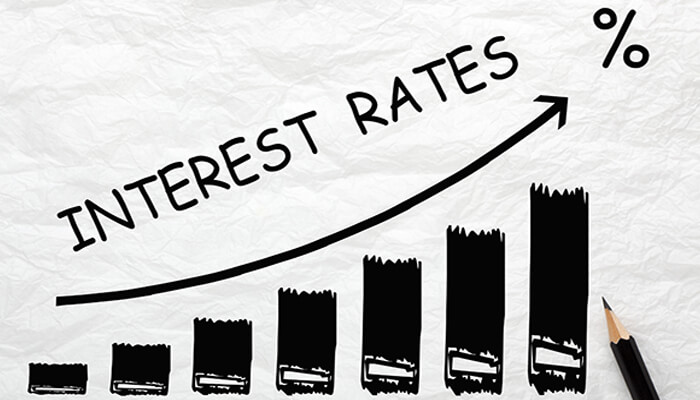Personal loans are versatile financing solutions with no end-use restrictions. From vacation expenses to medical bills, people can use them for almost every financial requirement. However, before applying for a personal loan, borrowers must ensure the overall cost stays within their budget. This is where the personal loan interest rates they’re getting on the loan will largely determine the overall outlay for repayment.
Simply put, interest rates are the price an individual agrees to pay for borrowing money. It is the compensation financial institutions charge for their service and the risk they take while lending money. However, interest rates keep changing, depending on central bank-determined rates, financial institutions’ respective offerings, and the applicant’s eligibility and repayment capacity. In any case, it aids the economy and moves it in a positive direction by encouraging people to lend, borrow, and spend. While planning to apply for a personal loan, an aspiring borrower must understand the components of interest rates to make informed decisions.
Personal loan interest rates have five principal components that affect the interest rates. Let’s take a look.
1. Real Risk-Free Rates
The risk-free rates assume that approving and disbursing instant personal loans does not involve any risk or uncertainty. This type of interest rate depends on how much benefit the borrower stands to gain from borrowing, spending the money now, and paying later. It runs in contrast to the financial institution’s interest in providing a lump sum amount to the borrower, only to collect it later in regular installments.
The financial institution benefits from this transaction by receiving more than it initially lent to the borrower. That naturally comes at some price, as the loan provider believes lending money would be profitable for them.
2. Expected Inflation
Prices rise over time in an economy based on the inflation rate. That means a currency’s purchasing power might fall during the loan tenure. Therefore, the financial institutions include the expected inflation rate as a component of the Personal Loan interest rates to compensate for the future loss of money’s value. The nominal interest rate is often the sum of the real and inflationary rates. Institutions understandably want to gain real returns on their capital.
3. Default-Risk Premium
Whenever a financial institution sanctions instant personal loans, there is some chance the borrower may not make the payments on time or repay them in full. They compensate for the risk by adding a default risk premium to the interest rate. That is when the concept of credit rating comes into play.
A credit score is a 3-digit number that helps determine an individual’s creditworthiness, based on which the lending institution evaluates the risk involved in lending to a particular applicant. Individuals with low credit scores have a high risk of loan default. Therefore, financial institutions integrate high default-risk premiums into their final interest rate. In contrast, those with high credit scores have a lower risk involved, eventually attracting low default-risk premiums.
4. Liquidity Premium
Liquidity is a parameter for how easily an asset can be converted into cash. It is meant to compensate financial institutions for the higher risk they take by lending such loans. Something like gold can easily be converted into cash. Since there are minimal risks involved in these types of financial securities, the corresponding personal loan interest rates attached to them are low. Liquid assets that can readily be converted into cash hold more value. On the contrary, less liquid assets attract higher interest rates. Other loans with less liquidity and longer maturity rates have higher interest rates attached to the principal amount.
Any lender would be unwilling to put their money into such a transaction if the interest rate is too low on a high-risk loan plan. Like other components, the interest rates are natural products of the supply-and-demand chain.
5. Maturity Premium
As discussed above, the maturity premium involves how personal loan interest rates increase with the loan term. This compensates the financial institutions for lending an amount for which they have to wait longer to get full repayment. With respect to interest rates, a lending institution offers a lower interest rate for a 1-year personal loan than a 3-year loan plan.
Typically, the maturity premium is analogous to the liquidity premium. For instance, a personal loan with a 5-year maturity will have a higher interest rate than a loan with a 1-year maturity. However, there is little difference in the final interest outgo. That means the function of interest rates is non-linear.
Factors Affecting Personal Loan Interest Rates
Before applying for a personal loan, an applicant can minimize interest rates by improving certain things that stand to affect them. Some factors affecting interest rates include the following:
1. Income
An applicant’s income helps a financial institution determine the risk it’s taking on lending money. High-risk borrowers have a high chance of defaulting on EMI repayments. Therefore, a borrower with a high income and a low DTI ratio suggests a loan on time. As a result, they qualify for instant Personal Loans at lower interest rates than others.
2. Repayment History
A good repayment history ensures a low risk for a new loan. It demonstrates financial discipline that increases an individual’s credibility and attracts lower interest rates.
3. Market Condition
Repo rates, recession, inflation, and more significantly affect the loan cost, directly impacting the interest rates.
All these components are crucial in determining personal loan interest rates, and while some are more important than others, they affect both potential borrowers and financial institutions alike.




